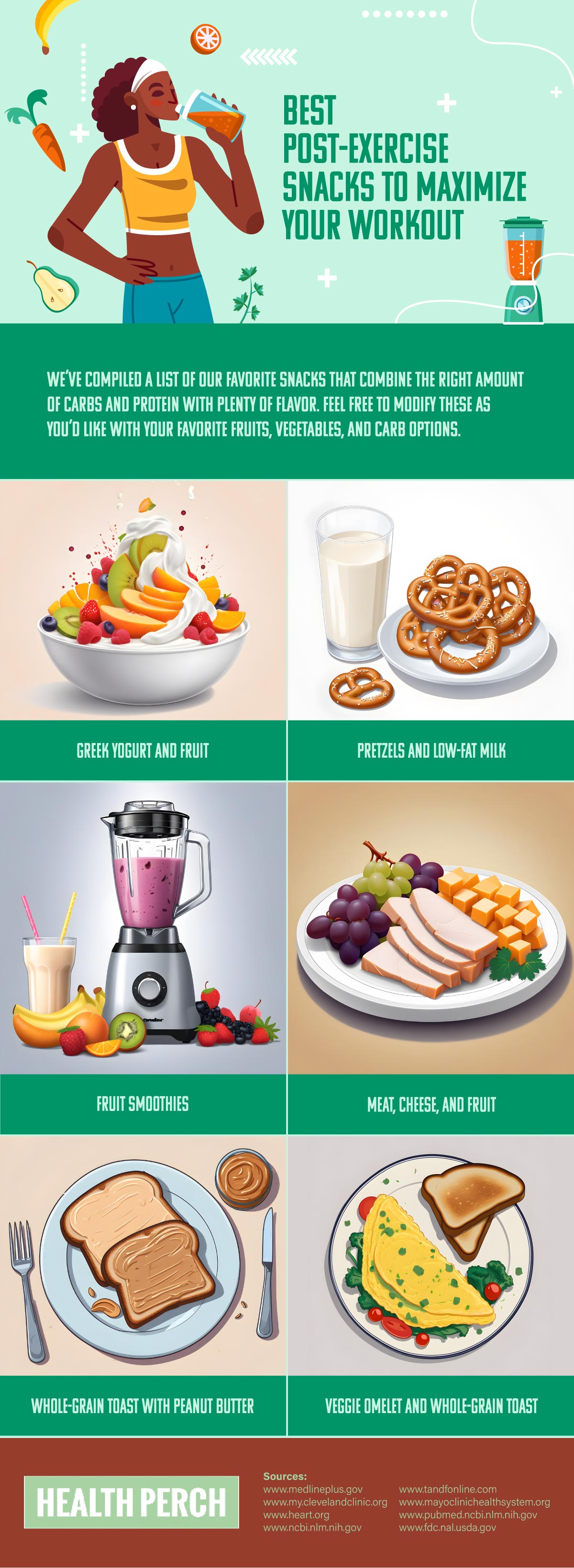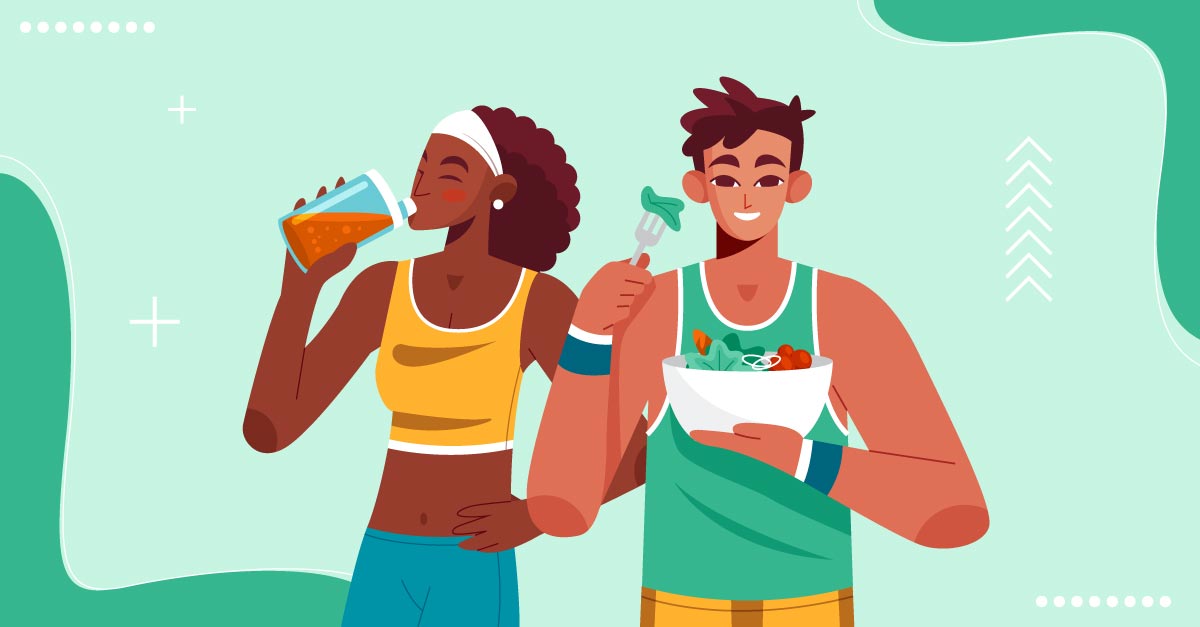Whether you’re training for a marathon, swimming laps at the pool, or lifting weights at the gym, you want to see your hard-earned results. Choosing the right snacks to fuel your recovery and gains can make a world of difference. Health professionals recommend eating a balance of carbohydrates (carbs) and protein to replenish your body and rebuild muscle.
Keep reading to learn more about the best snacks to eat after exercising and how they can maximize your workouts.
How Does Exercise Affect Your Body?
Think of your body like a car — it needs fuel (food) to keep everything running smoothly while you’re exercising. When you eat food, your body breaks down carbs into glucose (your body’s preferred form of sugar). Some glucose is used by your cells, and the rest gets stored as glycogen in your muscles and liver. Glycogen is made of chains of glucose and is ready to break down for energy as soon as you start exercising.
Intense workouts drain your muscles’ glycogen stores quickly, like how a racecar burns through fuel at top speeds. You need to replenish them after exercising so that you’re ready for your next workout. The best way to do this is by eating carbs. If you’re looking to refuel quickly, simple carbs like white bread, energy gels with maltodextrin, and hard candy can all provide a boost.
Exercise is taxing on your muscles, leading to muscle fiber breakdown. Your muscles are made of proteins or chains of amino acids bound together. By eating enough protein after your workouts, you provide your body with what it needs to rebuild muscle. Studies show it’s best to eat high-protein snacks within 2 hours of exercising.
It’s also a good idea, in general, to increase your protein intake when regularly exercising. The Mayo Clinic suggests that people training for cycling or running events and those who regularly lift weights eat 1.2-1.7 grams of protein per kilogram of body weight every day. For example, if you weigh 150 pounds (68 kg), you should get 81-115 grams of protein per day.
Balancing Carbs and Proteins
The ratio of carbs and proteins you eat in a post-exercise snack also matters. Older studies have shown that eating a 3 to 1 ratio of carbs to protein is best for recovery. This means you may choose to have a snack that has 60 grams of carbs and 20 grams of protein. The type of exercise you engage in also affects what your body needs. If you’re doing long-distance running, your nutritional needs are likely different than if you were lifting weights. A registered dietitian or wellness coach can help you determine the right amount of carbs and protein you need.
Our Favorite Post-Exercise Snacks
We’ve compiled a list of our favorite snacks that combine the right amount of carbs and protein with plenty of flavor. Feel free to modify these as you’d like with your favorite fruits, vegetables, and carb options.
- Greek yogurt and fruit: Greek yogurt is an excellent source of protein, with an average of nearly 20 grams per serving. Add some sliced strawberries and blueberries, a drizzle of honey, or even a handful of chopped walnuts.
- Pretzels and low-fat milk: Pretzels are simple carbs your body can quickly break down to replenish your glycogen stores. Salt also helps replace the sodium you lose through sweat. Wash them down with low-fat milk, complete with 8 grams of protein.
- Fruit smoothies: Smoothies are one of the simplest ways to combine carbs and protein. Fruits like bananas, oranges, and mangos replenish your electrolytes (potassium and magnesium levels). Low-fat milk and Greek yogurt add calcium to promote bone and muscle health with plenty of protein. Add in a handful of ice for hydration, and you have the perfect post-workout snack.
- Meat, cheese, and fruit: After you get home from the gym, put together a personal charcuterie board for yourself! Slices of deli meat, cheese, and fruit are the perfect combination of carbs and protein. Mix and match your favorites, whether it’s turkey or chicken, Swiss or cheddar, and apples or grapes.
- Whole-grain toast with peanut butter: Pop a few pieces of bread in the toaster and layer on peanut butter (or your favorite nut butter) for a quick and easy snack. While peanut butter is a high-fat food, the complex carbs and protein help balance it out. You can also add a handful of fruit or sliced veggies on the side.
- Veggie omelet and whole-grain toast: Put your culinary skills to the test by making an omelet with veggies! Blend together your eggs with cottage cheese for an added protein boost, then cook your favorite veggies (peppers, onions, spinach, mushrooms, etc.). Serve with whole-grain toast for a carb kick.

